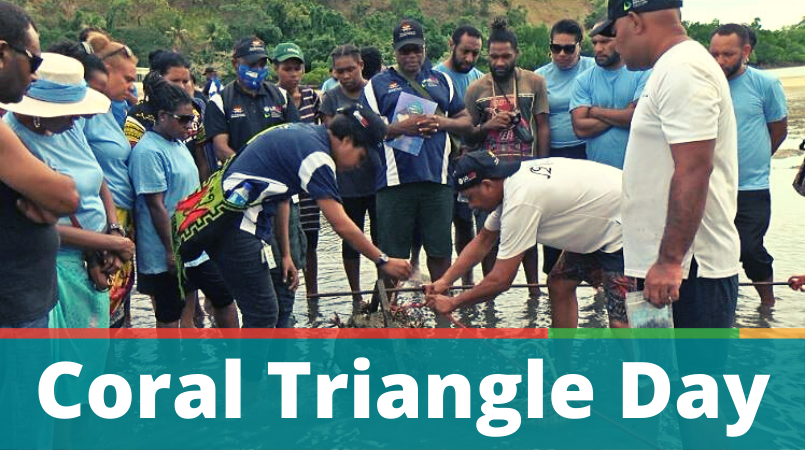
The Coral Triangle Day was celebrated by the Conservation and Environment Protection Authority recently at UPNG’s Motupore Island Research Centre within the Bootless Bay.
On the day, employees of CEPA with stakeholders and partners, led by Total Waste Management, removed plastic waste and other non-degradable garbage around the mangrove patches on the island.
It was also a day to witness the innovative way of reviving coral reef by a local NGO, Hiri Coral.
The Coral Triangle Day is a day dedicated to celebrate the six countries of Papua New Guinea, Malaysia, Indonesia, The Philippines, Timor Leste and Solomon Islands who have the largest remaining coral reefs in the world.
The day was divided into three parts; the cleaning of the mangrove and beachfront, planting of new mangrove trees and the demonstration of reviving dead coral reefs.
Hiri Coral Founder, Igo Gari, demonstrated the innovative methods of replanting coral within the Bootless Bay to revive the coral reefs that have been dead for more than 30 years.
“Just single tiny pieces and see how they’ve grown over 3-4 months. So what happens is when they have reached, probably in the next few months, I will mix a little bit of cement under water so I’ll just go see where those reefs have really been badly damaged, and are dead completely.
“I’ll just attach these to a stone with a piece of old cloth to clean the stones and I’ll just sink this with a bit of cement and there, it’s found its new home so it will grow for many more fish to come,” Gari said.
He urges others to do the same to revive dying coral reefs. He encourage all to take photos of the coral replanting and share with as many people as possible.
“The more people we engage to plant one or two corals, that makes a really huge difference.”
He demonstrated two methods that he uses to grow the corals from just a small piece; he creates triangle-shaped structures and ties the pieces of coral while the other method is to build a spider-webbed shape structure.
Through the project, he has trained local fishermen to use tools like pliers to build constructions for the coral planting. He is also engaging young people to learn the ropes of using small pieces of coral to rejuvenate the dead ones.
Hiri Coral project is also engaging locals in replanting seaweed together with the corals. However, Gari is calling on the community, including business houses and government agencies and donors, to assist with funding for incentives for those volunteering in the project.
